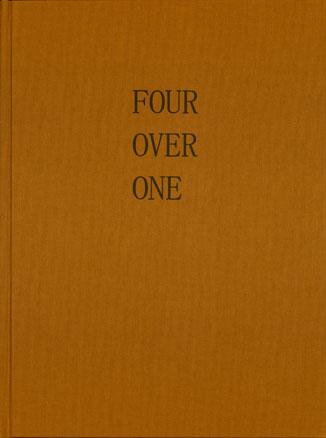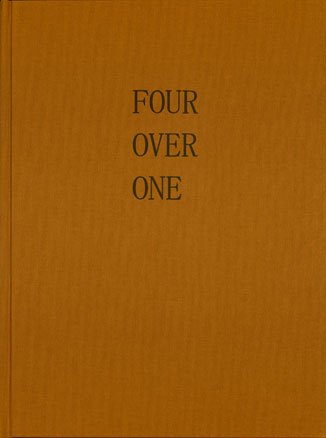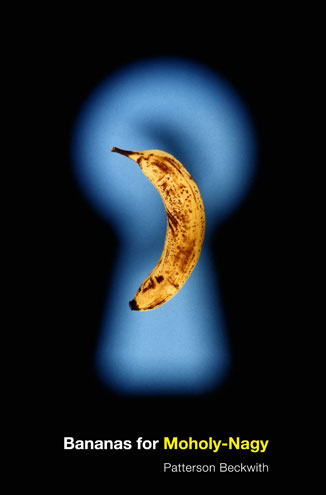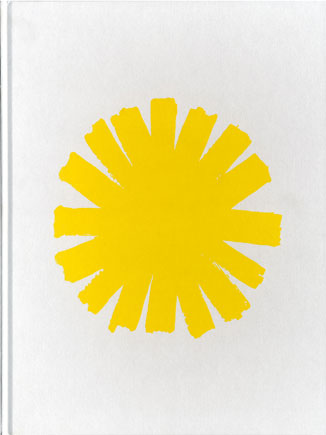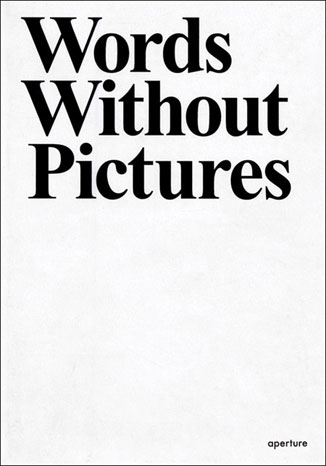LACMA’s Wallis Annenberg Photography Department has published four books in the last year that have one thing in common: in their own individual ways, they communicate our relationship to very specific moments from the first 150 years of photographic history. Only one of the four, coincidentally titled Four Over One, by Phil Chang, uses images to explicitly explore a world dealing with digitization and obsolescence in photographic processes. Another, Words Without Pictures, edited by Alex Klein, includes pointed essays discussing online images and digitization. The other two books, The Sun as Error, by Shannon Ebner, and Bananas for Moholy-Nagy, by Patterson Beckwith, are so not about digital photography—so steeped in analog filmic processes—that their obvious footing across the divide becomes part of the message.
It’s hard not to wrestle with the topic of digital photography in today’s conversation about photography. I recently attended a two-day slap fight of ideas verging on verbal pugilism at times—the symposium “Is Photography Over?” hosted by SFMOMA in April. You could probably count the minutes on two hands (maybe three…) before the word “digital” pounced onto the scene and began to be regularly peppered throughout the days’ conversations as a path to an answer, only to be quickly abandoned for more interesting fodder. It’s not breaking news that digital has changed the way that we take, view, disseminate, think about, talk about, process, collect, commodify, archive, protect, believe, disassociate ourselves from, manipulate, research, and relate to photography. But has digital strangled photography to death, lassoed with the lariat of a binary zero? According to the thirteen panelists of “Is Photography Over”—artists, curators, academics, and authors—probably not. Or at least the players creating photographic art in the hereafter (or is it just art?) are looking quite spry.
“ID:17 APERTURE: F5.6 HEIGHT:132 CM PPI: 600 PASSES: 6 SIZE: 70.1 MB”—from Four Over One, by Phil Chang (Los Angeles: Los Angeles County Museum of Art, 2010), p. 55
The books mentioned above will continue to explore what it is that’s “going on” with photography. Phil Chang’s monograph Four Over One is page after page of gently shaded but monochromatic prints that shift like the weather from one image to the next. Finding an explanation for this seemingly subject matter-deficient presentation takes a bit of detective work. Other than a production note on the second-to-last page (“The photographs in this publication were made using an i2s Digibook 2000LC book scanner and Kodak Kobachrome II RC photographic paper”) and a list of specifications in place of a list of plates, there is one sentence buried within the acknowledgements that speaks to the theme: Four Over One is “… a project that centers on economy and obsolescence….” I guarantee this is one of the most unusual books you will ever come across.
“A plain, matter-of-fact enumeration of the specific photographic elements—will be enough to enable us to divine the power latent in them, and prognosticate to what they lead.”—László Moholy-Nagy, from his essay “A New Instrument of Vision” (extract from “From Pigment to Light”, in Telebar Vol. 1/2, 1936) as printed in Bananas for Moholy-Nagy by Patterson Beckwith, with an essay by Alex Klein (Los Angeles: Los Angeles Museum of Art, 2010), p. 11.
In the forthcoming Bananas for Moholy-Nagy, Patterson Beckwith quite literally, but with slight tongue-in-cheek, interprets “The eight varieties of photographic vision” as put forth by László Moholy-Nagy in “A New Instrument of Vision,” from 1936, by photographing bananas in eleven different ways—x-ray, filters, photograms, prolonged exposure, etc.
“The only type of corruption of transmitted data that has been discussed is the error. An error actually represents two unknown quantities in general: location and symbol value,” referred to via asterisk on page 239: “Wiggert, Djimitri. CODES FOR ERROR CONTROL AND SYNCHRONIZATION. Massachusetts: Artech House, Inc., 1988.”—from The Sun as Error, by Shannon Ebner, coordinated by Dexter Sinister (Los Angeles: Los Angeles County Museum of Art, 2009), edition notice page text; p. 239.
Shannon Ebner, in The Sun as Error, includes diagrams and illustrations from practical-photography textbooks and Ansel Adams’ The Print and The Camera interspersed with her own work, which spans tableau text-based setups and quixotic moments of close-up landscape and living-scape captured on film. Citations for the anachronistic elements similar to the caption above provide for some entertaining reading at the end.
“One of the most important facets of the digital era is that it created both the markets and desires to revisit the past…”—Charlotte Cotton, in her essay “Process, Content, and Dissemination: Photography and Music,” from Words Without Pictures, conceived by Cotton and edited by Alex Klein, Aperture edition (New York: Aperture, 2010), p. 228.
Words Without Pictures, in title alone, says it all. The book is a record of what went down when a series of online essays, discussion forums, and live-for-the-audience conversations created “spaces where thoughtful and urgent discourse around very current issues for photography could happen.” Words Without Pictures includes essays with titles like, “Photography as Art,” “Online Photographic Thinking,” “Remembering and Forgetting Conceptual Art,” “Abstracting Photography,” all born by c-section from the mother of all questions about photography. And this mother—this urgency—is the digital. If not the mother, then, at least, a very nosy neighbor.
The Photography Department is celebrating the publication of these four books with a reception this Sunday at 4 pm at Art Catalogues at LACMA, including a conversation moderated by Britt Salvesen, curator, Wallis Annenberg Photography Department, with artists Patterson Beckwith and Phil Chang, and light refreshments.



